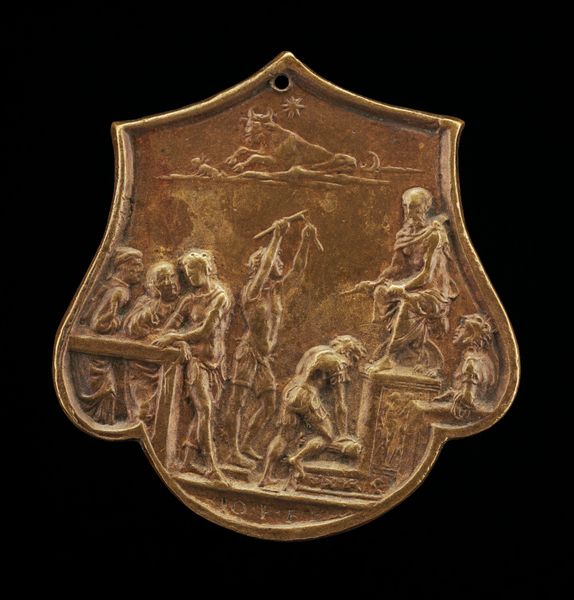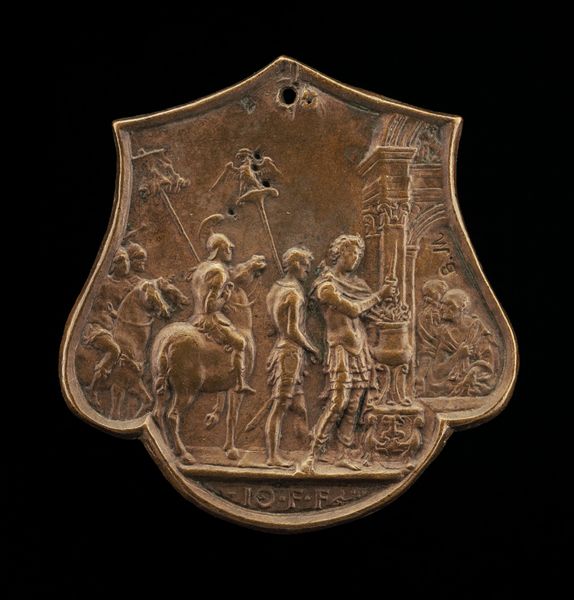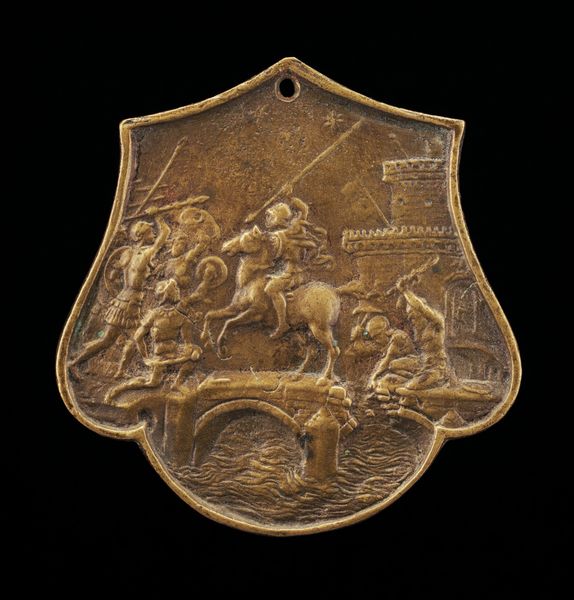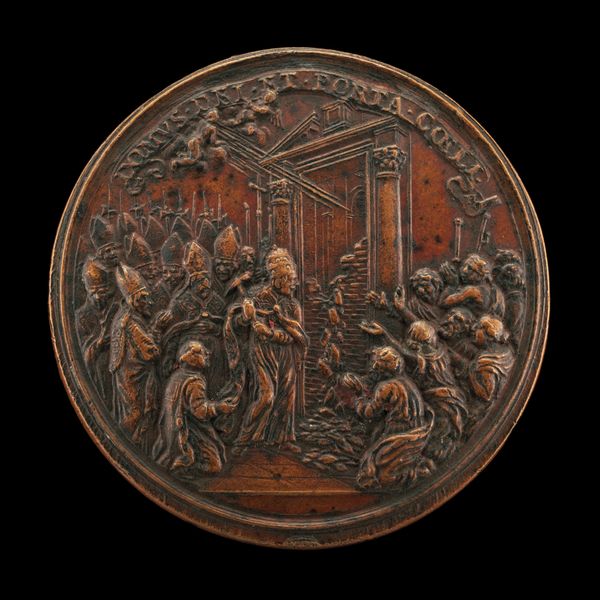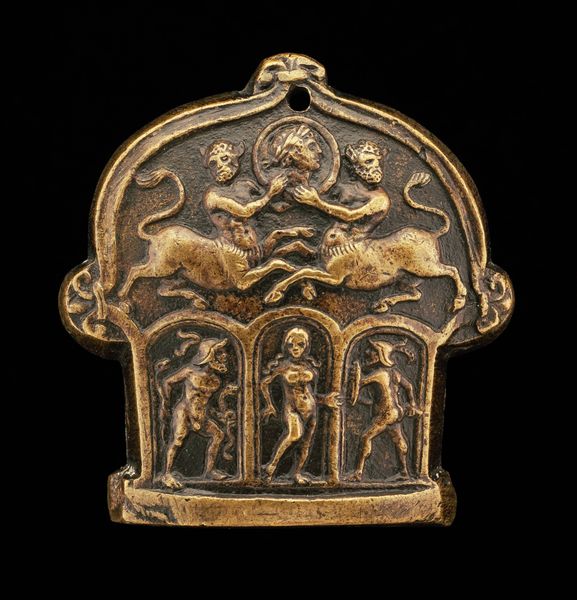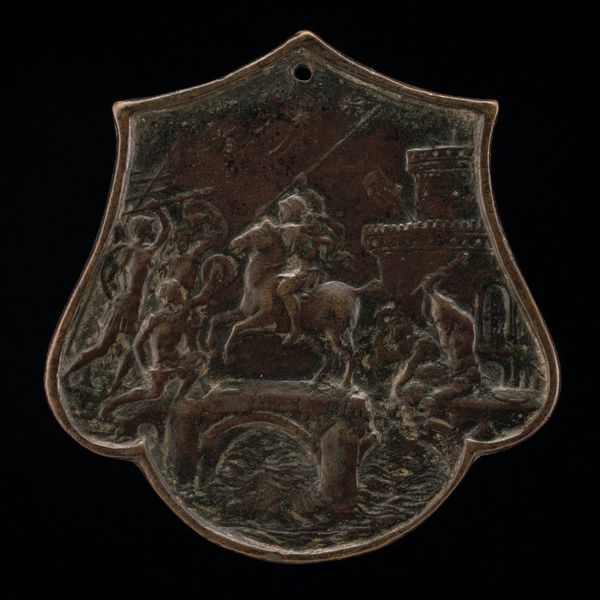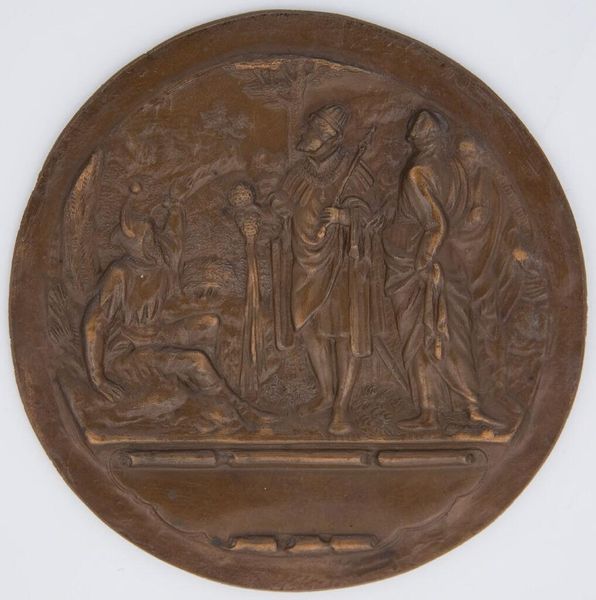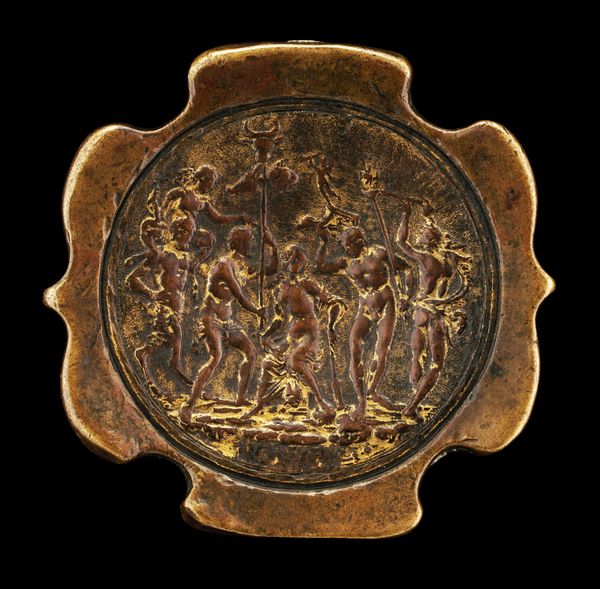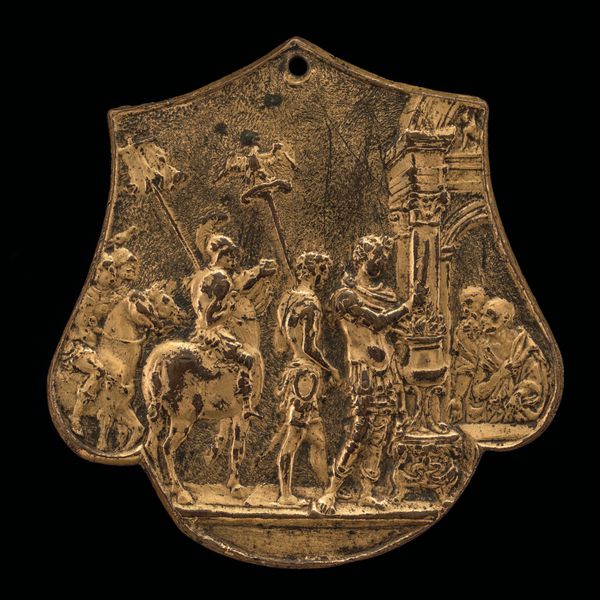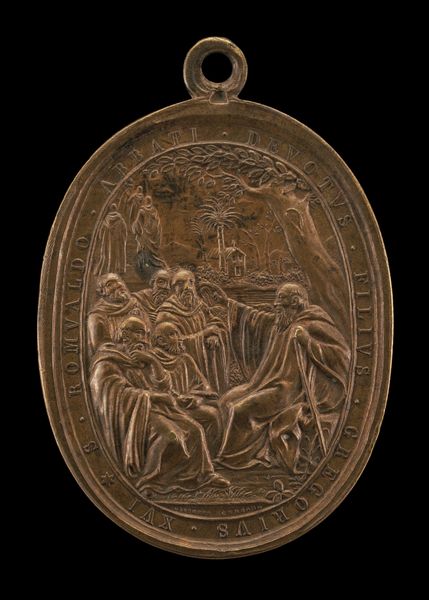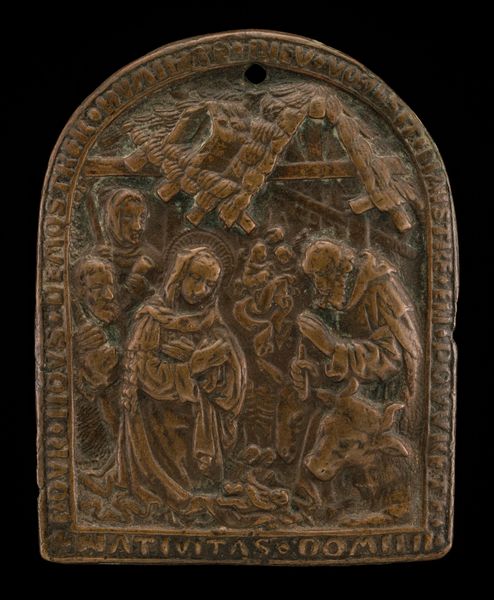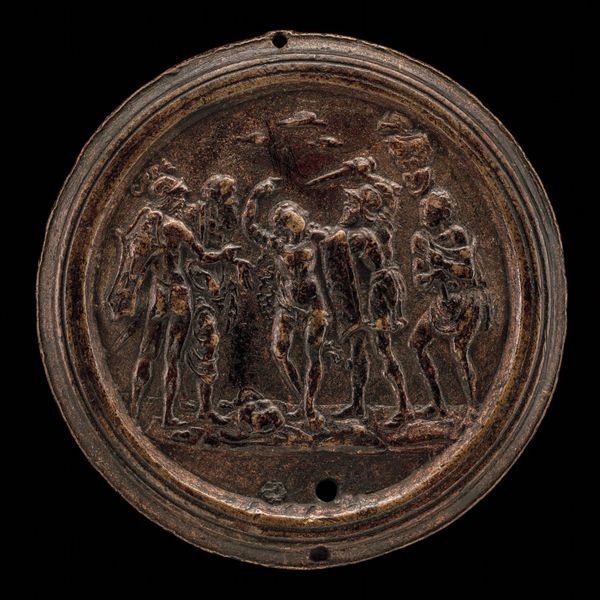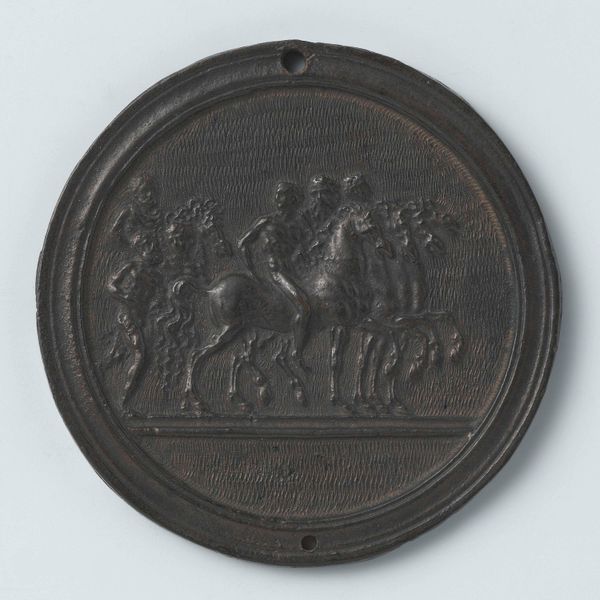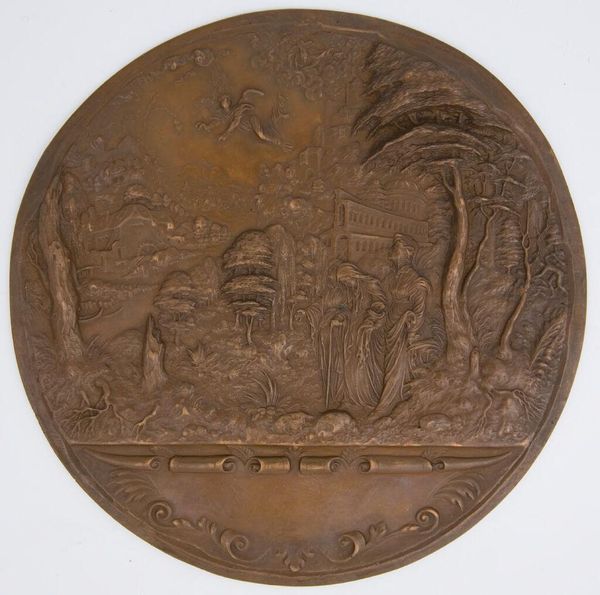
relief, bronze, sculpture
#
narrative-art
#
sculpture
#
relief
#
bronze
#
sculptural image
#
figuration
#
11_renaissance
#
sculpture
#
history-painting
#
italian-renaissance
Dimensions: overall (shield-shaped): 6.18 × 5.98 cm (2 7/16 × 2 3/8 in.) gross weight: 31.19 gr (0.069 lb.)
Copyright: National Gallery of Art: CC0 1.0
Curator: This small bronze relief, dating from around the 15th century, captures a dramatic moment from Roman history, known as "The Death of Marcus Curtius." Editor: It's strikingly visceral. The plunging figure on horseback creates an immediate sense of chaos, almost overwhelming the formality of the architectural backdrop. Curator: Absolutely. Master IO.F.F., the artist behind this piece, uses the figure of Curtius as a potent symbol of Roman patriotism, referencing the ancient story of a chasm that opened in the Forum, demanding Rome's most valuable possession as sacrifice. Editor: So, Curtius, representing Roman valor, willingly throws himself into the abyss to save his city. It's interesting how the Renaissance context would re-frame this pre-Christian act as a model for civic virtue. How did this play in the cultural sphere, then? Curator: These images often became tied to ideas of collective memory. Visual markers reinforcing social and ethical codes were very carefully monitored, yet individual readings would abound in relation to class or level of erudition, which could get very problematic. Editor: You're right; its public reception must have been incredibly charged, loaded with political and ideological nuance. It seems the choice of bronze adds to the gravity of the scene. How would you describe the interplay between the material, style, and story it narrates? Curator: Bronze was the material of heroes in classical sculpture. Here it grounds the narrative with an enduring permanence but notice how the rough texture lends the piece a compelling tension. Editor: It feels both idealized and brutally real simultaneously. What a smart touch. Curator: It shows how powerfully visual motifs endure, transformed and adapted through generations but still able to evoke deep cultural meaning. Editor: Seeing this, I am left reflecting on art's role in shaping public virtues across centuries—such a poignant little historical echo.
Comments
No comments
Be the first to comment and join the conversation on the ultimate creative platform.
